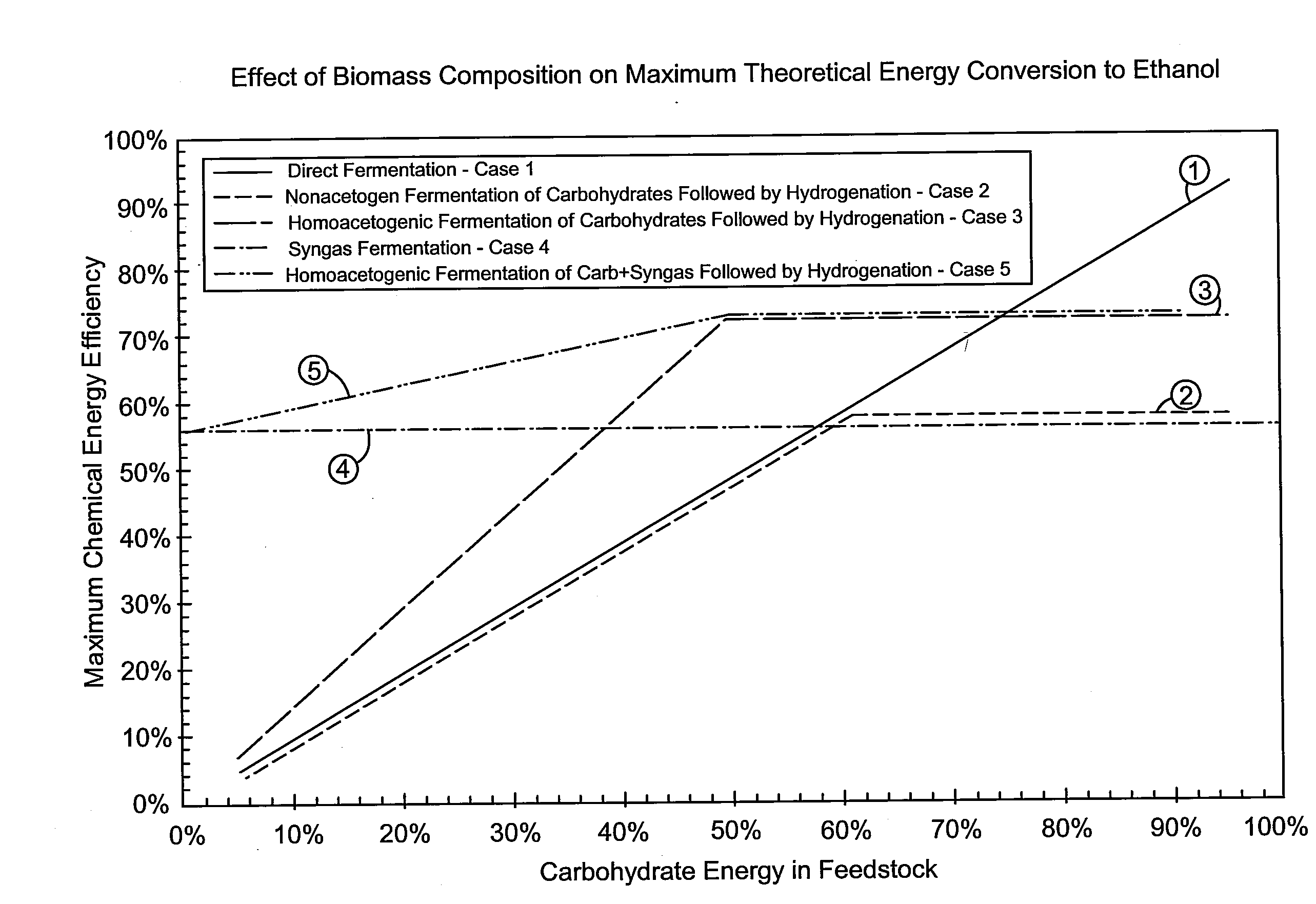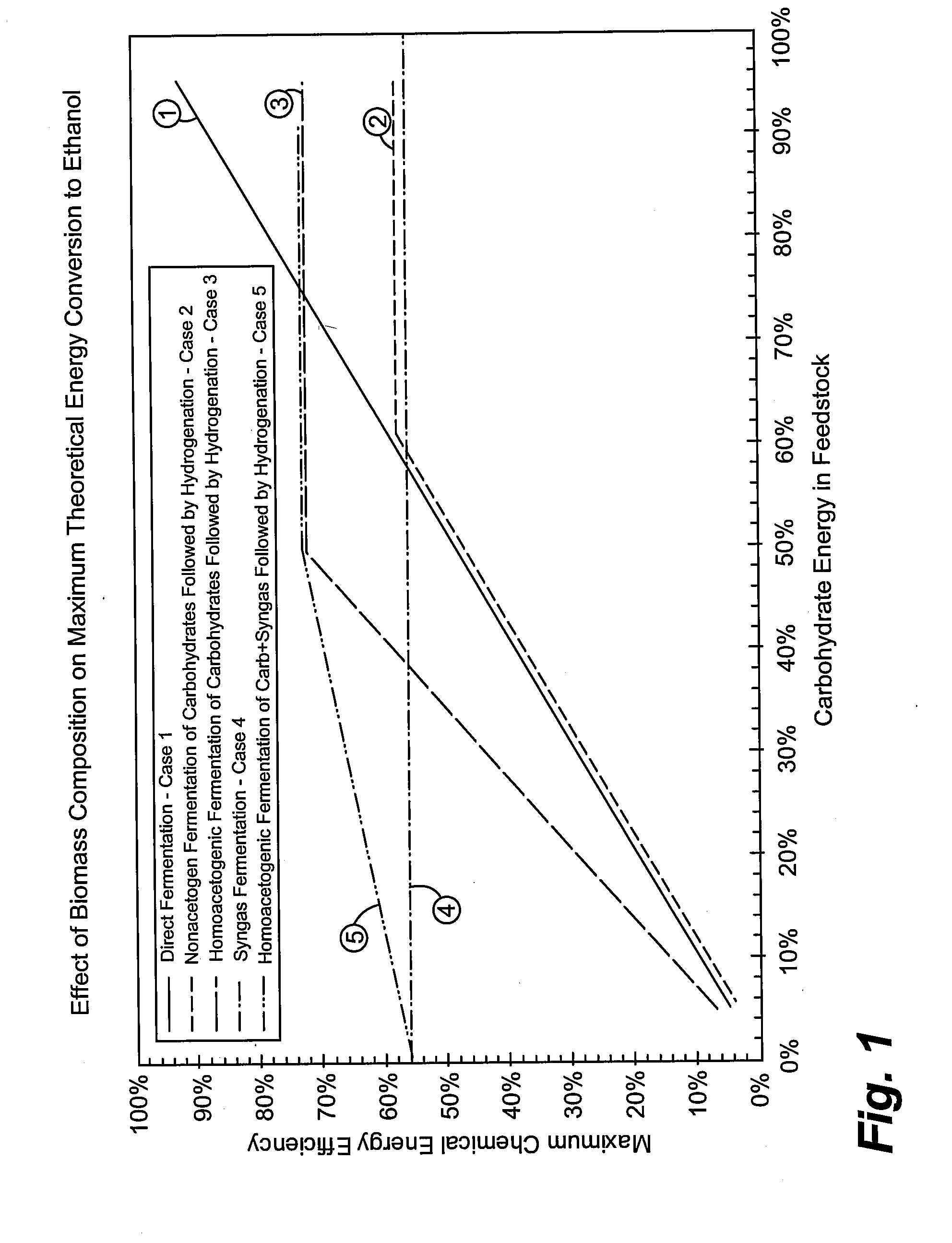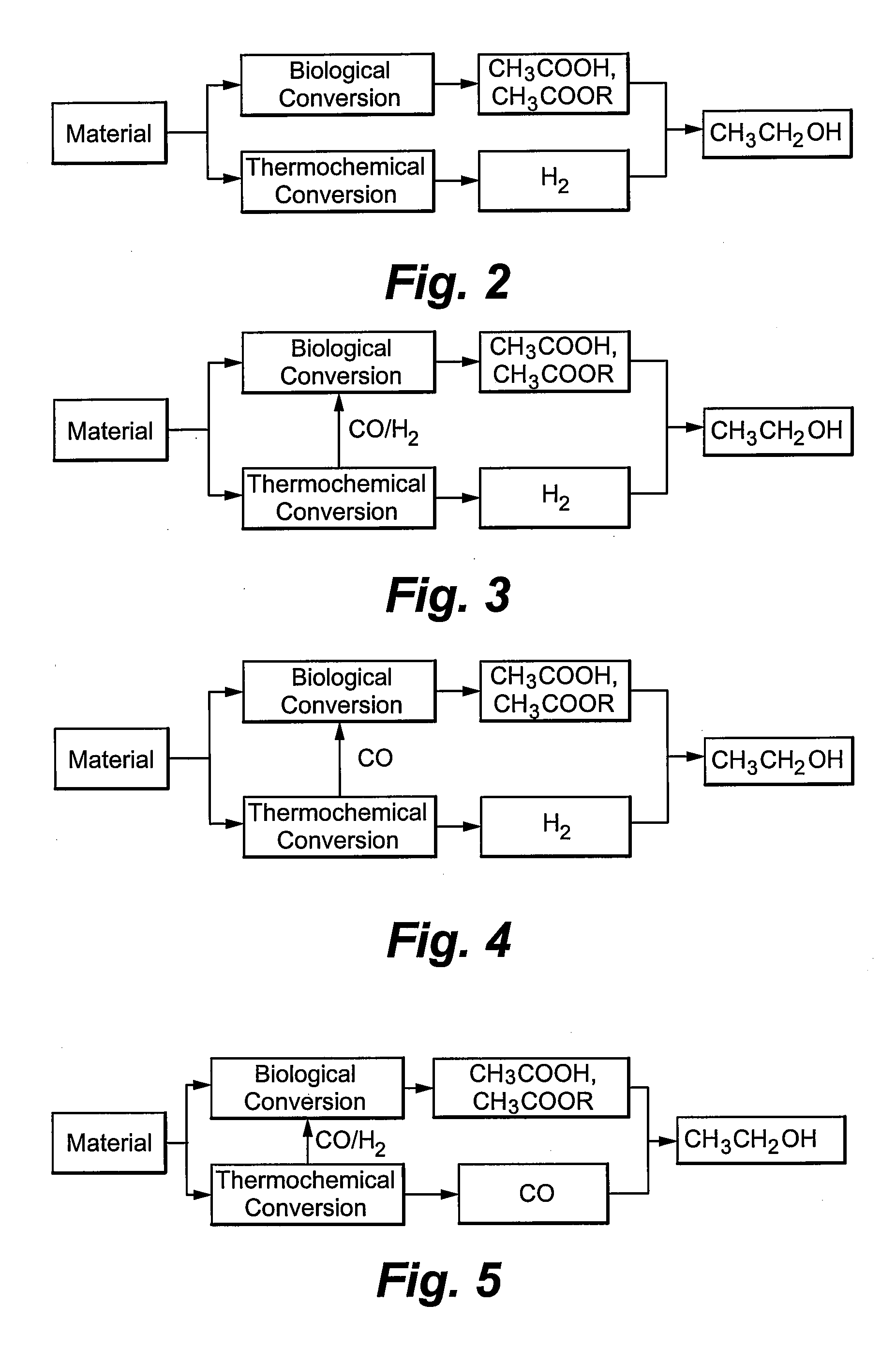[0045]Another embodiment of the present invention is a method for producing propanol from a material comprising carbon-containing compounds, wherein less than about 75% by weight of the carbon-containing compounds are carbohydrate substances. This method includes converting the material into at least two intermediates, wherein at least one intermediate is produced by a biological conversion process and comprises propionic acid, a propionate ester, a propionate salt, or a mixture of propionic acid, propionate ester and a propionate salt, and wherein at least one intermediate is produced by a thermochemical conversion process and comprises hydrogen. In this method, the step of converting includes producing propionic acid, propionate ester propionate salt, or mixture of propionic acid, propionate ester and propionic salt by biological conversion of carbohydrate substances in the material and a portion of the hydrogen produced by the thermochemical conversion process. The method further includes chemically reacting remaining hydrogen and the propionic acid, propionate ester, propionate salt, or mixture of propionic acid, propionate ester and propionate salt to produce propanol. In this method, the chemical energy efficiency is greater than the chemical energy efficiency of a solely biological conversion process to produce propanol and is greater than the chemical energy efficiency of a process in which all of the material is initially subjected to a thermochemical conversion step as part of the process to produce propanol. In this method, the biological conversion process can include fermentation.
[0046]In another embodiment, the present invention includes a method for producing ethanol from a material comprising carbon-containing compounds, wherein less than about 75% by weight of the carbon-containing compounds are carbohydrate substances. This method includes converting the material into at least one intermediate, wherein the at least one intermediate is produced by a biological conversion process and comprises acetic acid, an acetate ester, an acetate salt, or a mixture of acetic acid, acetate ester and an acetate salt and a conversion process residue, and converting the conversion process residue into at least one intermediate, wherein the at least one intermediate is produced by a thermochemical conversion process and comprises a reductant. The method further includes chemically reacting the acetic acid, acetate salt, or mixture of acetic acid, acetate ester and acetate salt and the reductant to form ethanol. In this method, the chemical energy efficiency is greater than the chemical energy efficiency of a solely biological conversion process to produce ethanol and is greater than the chemical energy efficiency of a process in which all of the material is initially subjected to a thermochemical conversion step as part of the process to produce ethanol. In this method, the reductant can be selected from hydrogen, carbon monoxide, and a mixture of hydrogen and carbon monoxide. In addition, the step of converting can include producing at least a portion of the acetic acid, acetate ester, acetate salt, or mixture of acetic acid, acetate ester and acetate salt by a biological conversion process of carbohydrate substances in the material. In this method, the biological conversion process can include fermentation.
[0047]Another embodiment of the present invention is a method for producing ethanol from a material comprising carbon-containing compounds, wherein less than about 75% by weight of the carbon-containing compounds are carbohydrate substances. This method includes converting the material into at least two intermediates, wherein at least one intermediate is produced by a biological conversion process and comprises a biological process-produced intermediate selected from the group consisting of acetic acid, an acetate ester, an acetate salt, or a mixture of acetic acid, acetate ester and acetate salt, and at least one intermediate is produced by a thermochemical conversion process and comprises hydrogen and methanol. In this method, the step of converting can include producing a portion of at least one biological process-produced intermediate by biological conversion of carbohydrate substances in the material, and producing a portion of at least one biological process-produced intermediate by biological conversion of methanol produced by the thermochemical process. The method further includes chemically reacting hydrogen produced by the thermochemical conversion process and biological process-produced intermediates to form ethanol. In this method, the chemical energy efficiency is greater than the chemical energy efficiency of a solely biological conversion process to produce ethanol and is greater than the chemical energy efficiency of a process in which all of the material is initially subjected to a thermochemical conversion step as part of the process to produce ethanol. In this method, the biological conversion process can include fermentation.
[0048]A further embodiment of the present invention is a method for producing butanol and ethanol from a material comprising carbon-containing compounds, wherein less than about 75% by weight of the
 Login to View More
Login to View More  Login to View More
Login to View More 


